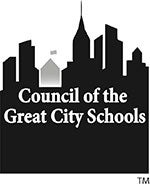Principal Supervisors Play Critical Role in Instructional Leadership, Study Finds


FOR IMMEDIATE RELEASE
Contacts:
Henry Duvall
(202) 393-2427
hduvall@cgcs.org
Jessica Schwartz
(212) 251-9711
jschwartz@wallacefoundation.org
WASHINGTON, October 15 – School districts are increasingly relying on principal supervisors to ensure school principals are prepared to meet the increasing demands of their jobs, according to a study released today by the Council of the Great City Schools.
Commissioned by The Wallace Foundation, Rethinking Leadership: The Changing Role of Principal Supervisors examines the roles and responsibilities of principal supervisors in major school districts across the country. The report looks specifically at the ways those in these pivotal “central office” leadership positions are selected, supported and evaluated.
Principal supervisors often oversee large numbers of principals and still handle extensive administrative oversight responsibilities as vestiges of past structures or roles – and with diminished central office funding. They oversee an average of 24 schools each, according to survey results.
“Districts should think carefully about how the work of principal supervisors is connected to the district’s major reform initiatives and overall vision for change,” says Council Executive Director Michael Casserly. “In the context of the Common Core State Standards, for example, principal supervisors provide a critical link between central office leadership and resources and building-level personnel.”
Given their crucial role of supporting principals, principal supervisors should be well matched to the needs of the schools assigned to them. However, the study found that doesn’t always happen, and that districts most often group schools together and match them with principal supervisors geographically in order to facilitate school visits.
“This new, important report by the Council of Great City Schools sheds light on how school districts construct and support the position of principal supervisor," said Jody Spiro, director of education leadership at The Wallace Foundation. "It's clear that it will take much more than training to help these leaders become more effective. Districts need to build systems that limit supervisors’ competing responsibilities and that do a better job matching supervisors with schools so they can support all of the principals they oversee.”
Although many principal supervisors were former principals, many lack experience as a human resources, operations or central office instructional administrator. Educators in these positions are rarely selected or evaluated based on a well-defined set of competencies. In addition, principal supervisors do not always have access to the kind of instructionally-focused professional development they need to help strengthen principals as instructional leaders of their schools.
This lack of experience is complicated by the fairly short tenure of principal supervisors in urban districts. The average amount of time they are in their positions is three years, suggesting that this position has been adapted or reinvented recently in many districts, or that turnover in the position has been extensive.
The Council launched the two-part study in fall 2012 with a survey of the Council’s 66 urban member districts, as well as two additional districts participating in The Wallace Foundation’s Principal Pipeline Initiative. This survey targeted staff currently serving as principal supervisors, asking them to provide details on their background, training, professional development, major job responsibilities, and how these responsibilities have changed over the past few years.
The survey was followed up by site visits to the six school districts participating in Wallace’s Principal Pipeline Initiative – North Carolina’s Charlotte-Mecklenburg Schools, Denver Public Schools, Georgia’s Gwinnett County Public Schools, Florida’s Hillsborough County Public Schools in Tampa, the New York City Department of Education, and Maryland’s Prince George’s County Public Schools.
The report includes recommendations to districts that want to build more effective principal supervisory systems. Among the recommendations, districts should:
- Define and clearly communicate throughout the school system the role and required competencies of principal supervisors;
- Narrow principal supervisor responsibilities and spans of control facing them so that they can provide school principals with individualized support and oversight; and
- Strategically select and deploy principal supervisors, matching skills and expertise to the needs of schools.
The report concludes that districts need to build systems wherein the processes for selecting, deploying, supporting and evaluating principal supervisors each work in tandem to strengthen the role of these critical staff members in schools and in the district.
###
The Council of the Great City Schools is the only national organization exclusively representing the needs of urban public schools. Composed of 66 large city school districts, its mission is to promote the cause of urban schools and to advocate for inner-city students through legislation, research and media relations. The organization also provides a network for school districts sharing common problems to exchange information, and to collectively address new challenges as they emerge in order to deliver the best possible education for urban youth.
The Wallace Foundation is an independent, national foundation dedicated to supporting and sharing effective ideas and practices that expand learning and enrichment opportunities for children. The Foundation maintains an online library of lessons at www.wallacefoundation.org about what it has learned, including knowledge from its current efforts aimed at: strengthening educational leadership to improve student achievement; helping disadvantaged students gain more time for learning through summer learning and through the effective use of additional learning time during the school day and year; enhancing out-of-school time opportunities; and building appreciation and demand for the arts.
